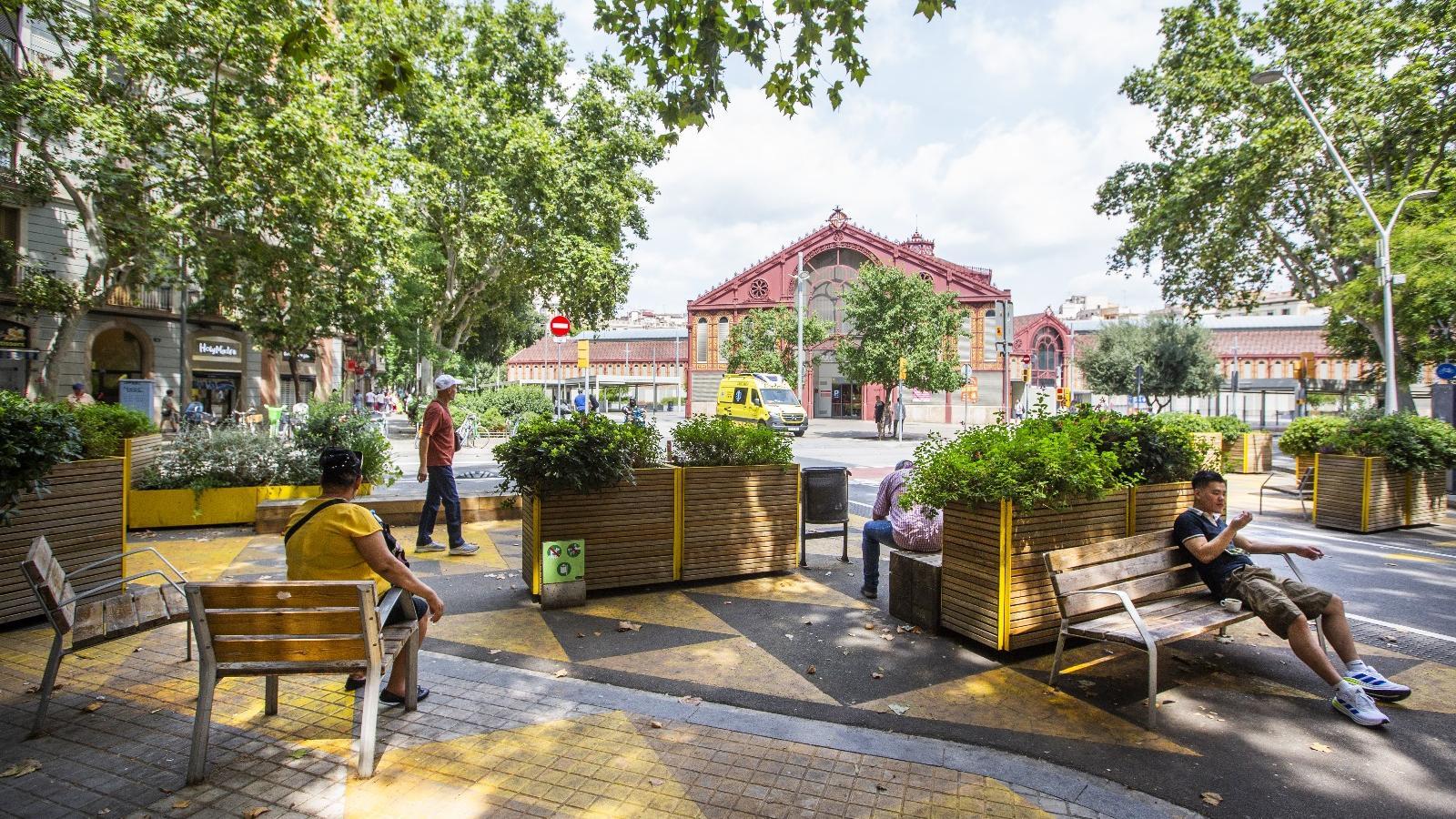Removing 30% of the furniture from the superblock: the City Council's plan to address the conflicts in Sant Antoni
Valls presents an emergency plan to improve neighborhood coexistence following complaints from residents.

BarcelonaThe illegal street sale of objects taken from containers, drug use and trafficking in public streets, the occupation of urban furniture for sleeping and the increase in filth have been, in recent months, The main complaints of the residents of the Sant Antoni neighborhoodIn response to this situation, Jordi Valls, councilor for the Eixample district, presented an action plan this morning with the aim of "improving coexistence." The proposal is based on three axes: actions on public spaces, increased security, and social measures.
The plan provides for the removal and relocation of between 20% and 30% of the current street furniture, especially in the street areas of the superblock and the Ronda de Sant Antoni. According to Valls, this furniture—such as benches, planters, and pillars—has "the duality of being used during the day by residents and at night for addictive consumption," and in some areas it has become a source of degradation, misuse, or accumulation of waste.
The action will begin this Monday, taking advantage of the work being carried out on the groundwater network from Sants-Montjuïc in the area. The work is expected to last two months and will be structured in several phases. It will involve the temporary removal of all street furniture along Llobregat Street from Comte Borrell Street, between Manso Street and L'Aldea Street. Taking advantage of the removal of street furniture, an "intensive" cleanup will also be coordinated, with additional work planned in the neighborhood, including cleaning around the dumpster locations four to five times a day.
Regarding security, police presence will be reinforced with more constant patrols and community officers, who will establish more fluid communication with neighborhood associations. This measure seeks to prevent minor crimes and improve the perception of security among residents. The council emphasized the importance of surveillance that is not only reactive, but also preventive and collaborative. During the press conference, the neighborhood's Guardia Urbana inspector, Begonya Garcia, emphasized that "all necessary resources will be used in terms of security."
Street vendor
In the social sphere, the service for drug users and homeless people will be maintained and expanded, with the aim of connecting them with care resources and integration pathways. The plan advocates for a more intensive and coordinated social intervention, combining a health and social approach with a community perspective. People who spend the night in public spaces in the Sant Antoni neighborhood will also be monitored.
Furthermore, to improve coexistence in public spaces, efforts will be made to address the various dynamics that generate or potentially generate conflicts, such as the detected street vending activity—with special attention to the Sant Antoni ring road—the night vendor market in front of the Pies schools, and complaints about gunshots.
During the presentation of the plan, Valls emphasized that Sant Antoni is "a lively, dynamic neighborhood, with a great cultural and commercial life, but which also presents significant challenges." The plan, according to the councilor, aims to preserve this vitality by ensuring adequate conditions for coexistence and shared use of public space.
